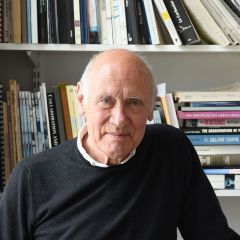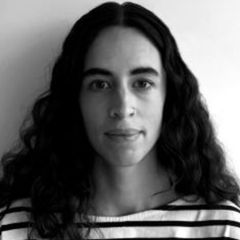Architecture
Regularly ranked as one of the leading architecture schools in the world, students at Cambridge study under the guidance of world-renowned researchers and ground-breaking practitioners.

Course overview
Architecture at Cambridge combines the intellectual challenges of both arts and sciences with the opportunity for creative design. There are three strands to the course:
- Studio work: Throughout the degree, students participate in a design studio where they undertake rigorous research, learn design methods including CAD software, and translate a brief into a building proposal. The core of the teaching takes place in the studio at Scroope Terrace. Students are taught by Design Fellows, the majority of whom are practicing architects with specific expertise in a range of topics.
- History and theory: Students attend lectures throughout the degree in history and theory. The first year is an intensive survey course organized in two key time periods, pre- and post-1800. In the first year, students are required to attend weekly supervisions which will cover the course content. In the second and third year, students can elect to study courses from a range of options, including but not limited to the philosophy of architecture, participatory practice, decoloniality, inclusivity, contemporary culture, and urbanism.
- Technical papers: Students are required to attend weekly lectures in Construction, Structures and Environmental Design.
Each term, students are assessed on a portfolio presentation of their studio work. They also undertake coursework during the holiday break at Christmas and Easter for both history and theory and the technical papers. In the third year, students work with a dedicated supervisor to produce a dissertation based on a subject of their choice.
For more information about the course and its modules, visit the University website.
What is it like to study Architecture at King’s?
On average, students attend their studio two days per week (although students often work on their design projects on non-studio days). On non-studio days, students attend lectures, which can often take up the full day.
In addition, on a weekly basis students will meet with a supervisor for each of the papers in smaller groups of between three to five other students. A typical supervision is one hour long. It will cover information taught during the lectures, however students are required to think through and beyond the boundaries of the topic. At King’s, students are required to write essays in between supervisions, which are often discussed as a group. Supervisions are a forum for students to be challenged by and learn from their peers, while also allowing more in depth discussion with expert tutors.
There could be between three to six students per year at King’s in Architecture.
In the first year, the whole year group goes on a week-long study trip abroad. In the past, students have visited Rome, Venice, and Antwerp. During the trip, students visit both historic and contemporary landmark buildings where they are encouraged to develop their observational drawing skills. This is also a great opportunity to forge bonds as a year group and get to know the tutors.
What do we look for in an applicant to Architecture?
The most successful students are motivated and curious. They are well-read and exhibit strong representational skills, which may include drawing and model-making. Architecture students tend to have broad interests, are knowledgeable about contemporary culture, and are able to work in an interdisciplinary way. A background in art is not essential, however those who excel on the course are extremely skilful at hand drawing and have a flair for thinking in imaginative ways.
Requirements
A Level: A*AA
IB: 41-42 points overall with 7, 7, 6 at Higher Level
Subject requirements: While none are required, we will expect you to have a knowledge of mathematics to at least a good GCSE standard. A Level or equivalent Maths is not a requirement. Subjects such as Maths, Art and Design, and Physics can often be useful for a strong application.
Admissions assessment: Yes
Written work: Portfolio. You will need to submit your own artwork prior to interview (more information about your portfolio submission can be found below)
Admissions assessment
Shortlisted applicants are required to take a 30-minute drawing test in advance of the in-person interview. At the interview, applicants will be required to present their portfolio, which is followed by a discussion based on concepts and resolution of the work, while also touching on their personal statement.
Written work
For your application, you are required to submit a portfolio of six (maximum) A4 pages. For the interview, please bring as much additional work as you like, including sketch books and finished pieces. You do not have to limit the portfolio to your A Level work. Consider bringing GCSE work and anything that you are working on in your own time. If you have a background in Design Technology or Product Design, please include hand sketching as well as more technical drawing. There is no standard portfolio, so be expansive in your choices. Candidates tend to include (but not limited to) observational drawing, life drawing, model making, 3D modelling, sculpture, painting, and photography. Please make sure that you are confident that you will be able to show us everything that you bring during the time allocated (for portfolio about 15-20 mins including conversation).
Careers and graduate opportunities
A degree in Architecture is an entry point into a range of creative professions. Since the course addresses a number of scales (from the design of a chair to master planning cities), graduates are able to apply their skills in many sectors. The majority of students pursue a Masters degree in Architecture with intent to qualify as an architect; however, because of the wide range of skills learnt, the degree is highly transferable. Recent alumni include architects but also those who work in television and film, consulting, construction, publishing, journalism, policy, and academia (to name just a few).
What is the best thing about studying Architecture at King’s?
King’s is a vibrant college at the centre of Cambridge. Students benefit from a close-knit community and additional facilities including a dedicated art room.
A top tip for applicants to Architecture at King’s
Read widely on topics related to architecture and urbanism, but also think about how the world around you is shaped by the built environment. Attend exhibitions and visit buildings in person where possible. Take an active interest in contemporary culture including, for example, art, music and film. Carefully construct your portfolio so that you show a range of work, including in-progress or unfinished pieces. Become aware and develop criticality of your own artistic design and making processes. We encourage you to be able to show us both successes and failures. King’s students tend to be extremely well-rounded individuals who can speak articulately about themselves and their work.
The Directors of Studies for 2025-2026 are Dr Felipe Hernandez (Part IA), Prof. Nick Bullock (Part IB), and Dr Jane Hall (Part II).



